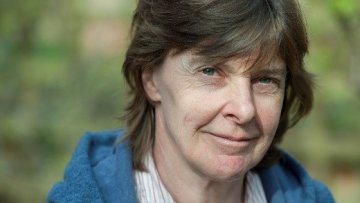Congratulations to Professor Alison Etheridge FRS who has been appointed as the new Chair of the Council for the Mathematical Sciences which represents the whole breadth of the mathematical sciences in the UK, with input from the Institute of Mathematics and its Applications (IMA), the London Mathematical Society (LMS), the Royal Statistical Society (RSS), the Edinburgh Mathematical Society (EMS) and the Operational Research Society (ORS).
12:45
Generalized entropy in topological string theory
Abstract
The holographic entanglement entropy formula identifies the generalized entropy of the bulk AdS spacetime with the entanglement entropy of the boundary CFT. However the bulk microstate interpretation of the generalized entropy remains poorly understood. Progress along this direction requires understanding how to define Hilbert space factorization and entanglement entropy in the bulk closed string theory. As a toy model for AdS/CFT, we study the entanglement entropy of closed strings in the topological A model, which enjoys a gauge-string duality. We define a notion of generalized entropy for closed strings on the resolved conifold using the replica trick. As in AdS/CFT, we find this is dual to (defect) entanglement entropy in the dual Chern Simons gauge theory. Our main result is a bulk microstate interpretation of generalized entropy in terms of open strings and their edge modes, which we identify as entanglement branes.
More precisely, we give a self consistent factorization of the closed string Hilbert space which introduces open string edge modes transforming under a q-deformed surface symmetry group. Compatibility with this symmetry requires a q-deformed definition of entanglement entropy. Using the topological vertex formalism, we define the Hartle Hawking state for the resolved conifold and compute its q-deformed entropy directly from the reduced density matrix. We show that this is the same as the generalized entropy. Finally, we relate non local aspects of our factorization map to analogous phenomenon recently found in JT gravity.
C* algebras and Geometric Group Theory
Part of UK virtual operator algebras seminar: https://sites.google.com/view/uk-operator-algebras-seminar/home
Abstract
In this talk I will discuss a number of topics at the interface between C* algebras and Geometric Group Theory, with an emphasis on Kazhdan projections, various versions of amenability and their connection to the geometry of groups. This is based on joint work with P. Nowak and J. Mackay.
Toeplitz quotient C*-algebras and ratio-limits for random walks
Part of UK virtual operator algebras seminar: https://sites.google.com/view/uk-operator-algebras-seminar/home
Abstract
We showcase some newly emerging connections between the theory of random walks and operator algebras, obtained by associating concrete algebras of operators to random walks. The C*-algebras we obtain give rise to new and interesting notions of ratio limit space and boundary, which are computed by appealing to various works on the asymptotic behavior of transition probabilities for random walks. Our results are leveraged to shed light on a question of Viselter on symmetry-unique quotients of Toeplitz C*-algebras of subproduct systems arising from random walks.
10:00
Three-Point Energy Correlator in N=4 Super Yang-Mills Theory
Abstract
Event shape observables describe how energy is distributed in the final state in scattering processes. Recent years have seen increasing interest from different physics areas in event shapes, in particular the energy correlators. They define a class of observable quantities which admit a simple and unified formulation in quantum field theory.
Three-point energy correlators (EEEC) measure the energy flow through three detectors as a function of the three angles between them. We analytically compute the one-loop EEEC in maximally supersymmetric Yang-Mills theory. The result is a linear combination of logarithms and dilogarithms, decomposed onto a basis of single-valued transcendental functions. Its symbol contains 16 alphabet letters, revealing a dihedral symmetry of the three-point event shape. Our results represent the first perturbative computation of a three-parameter event-shape observable, providing information on the function space at higher-loop order, and valuable input to the study of conformal light-ray OPE.
A generative model for reciprocity and community detection in networks
Abstract
We present a probabilistic generative model and efficient algorithm to model reciprocity in directed networks. Unlike other methods that address this problem such as exponential random graphs, it assigns latent variables as community memberships to nodes and a reciprocity parameter to the whole network rather than fitting order statistics. It formalizes the assumption that a directed interaction is more likely to occur if an individual has already observed an interaction towards her. It provides a natural framework for relaxing the common assumption in network generative models of conditional independence between edges, and it can be used to perform inference tasks such as predicting the existence of an edge given the observation of an edge in the reverse direction. Inference is performed using an efficient expectation-maximization algorithm that exploits the sparsity of the network, leading to an efficient and scalable implementation. We illustrate these findings by analyzing synthetic and real data, including social networks, academic citations and the Erasmus student exchange program. Our method outperforms others in both predicting edges and generating networks that reflect the reciprocity values observed in real data, while at the same time inferring an underlying community structure. We provide an open-source implementation of the code online.
arXiv link: https://arxiv.org/abs/2012.08215


